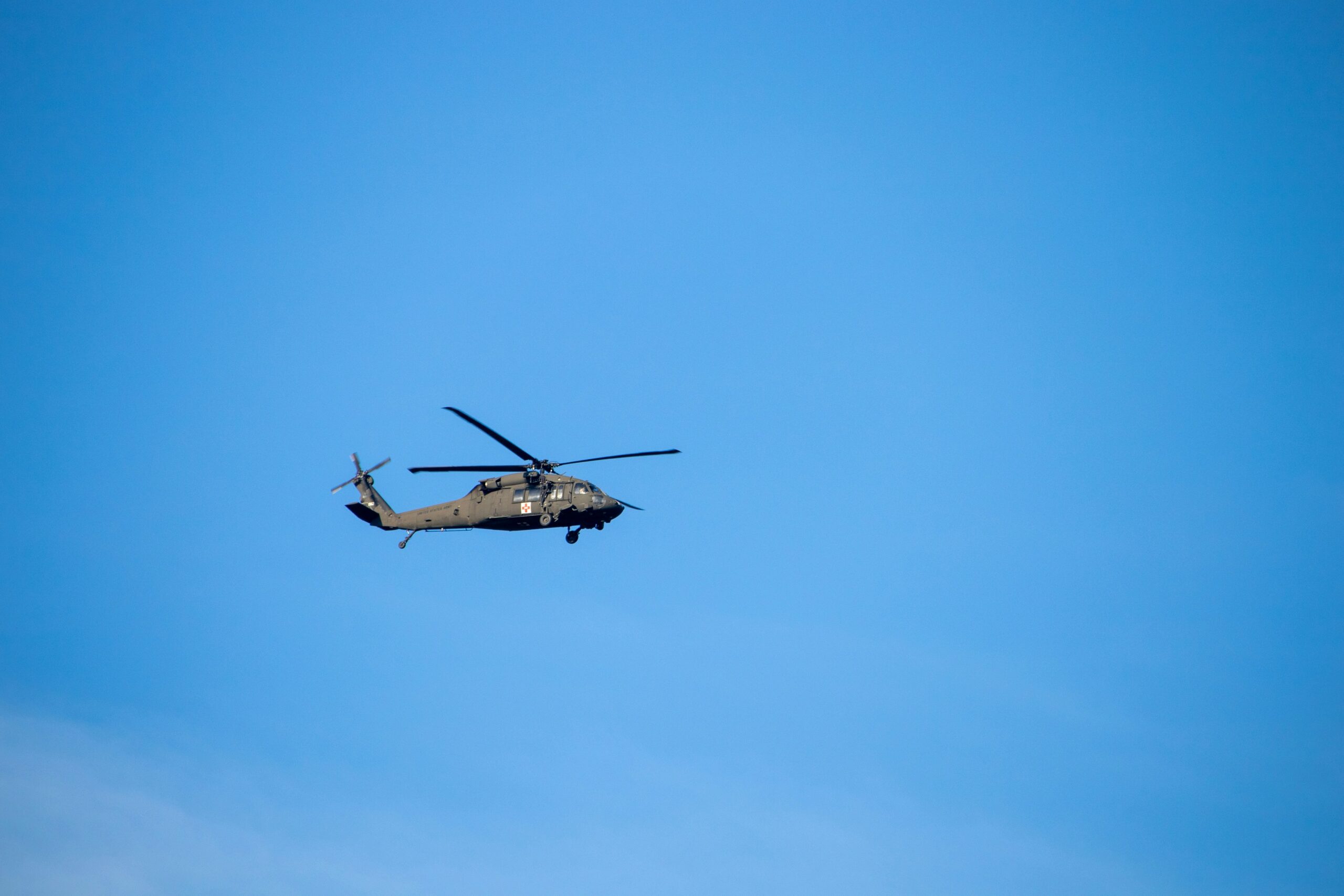Tenix Defence Systems has signed the follow-on contract that moves its Radio-Frequency Photonic Link research into full pre-production. The award covers “Phase 2 of Task 1” under Project Arrangement 10 (PA10), a joint Australia–United States framework that backs advanced self-protection techniques for tactical aircraft. This follows a similar milestone for AIR 5391, where Australia has invested in sovereign jamming systems for multiple platforms. Work starts this month at Tenix’s Systems Division laboratories in Melbourne and at partner sites in Clifton, New Jersey. The company will hand the first flight-worthy hardware to Australia’s Defence Science and Technology Organisation (DSTO) before October. Engineers describe the step as a hinge point because it pulls the concept out of the bench-top stage and puts it into the wiring looms of a complete countermeasures suite.
Phase 1 proved the core idea. Last year Tenix built two working optical links that carried 20 GHz and 40 GHz radio signals across single-mode fiber with almost no amplitude ripple. The trial links fed those signals into an ITT Industries breadboard of the AN/ALQ-211 Suite of Integrated Radio-Frequency Countermeasures (SIRFC). Technicians fired threat simulators at the rig and saw clean warning displays without the noise penalties that plague long coaxial runs. No additional shielding was required, and the optical cable cut the mass of a comparable copper harness by more than half. The Phase 2 program now scales the link, toughens the packaging, and proves airborne readiness.
Advancing RF Photonic Link for Airborne Countermeasures
SIRFC is the U.S. Army’s modular radar-warning and jamming system that already protects MH-47 and Black Hawk helicopters in Bosnia and has logged more than 50,000 operational hours. Canberra bought one complete SIRFC line-replaceable unit under PA10 so the DSTO Electronic Warfare Division can run national development tasks on a known baseline. That hardware will fly to Adelaide in October and will anchor a full integration campaign that runs through the first half of 2002. The campaign fits within the broader scope of DSTG’s electronic warfare programs aimed at building sovereign self-protection solutions. By that point Tenix and ITT expect to have the optical link installed, cabled, and verified inside the rack.
Ian Will, Tenix PA10 program manager, explained the attraction in blunt terms. “You win fights by reacting first,” he said. “The photonic link delivers a flat, wide pipe so every nanosecond of threat data stays intact from the antenna to the processor. That edge is decisive, and the aircrew never sees the plumbing that made it possible.” His team’s internal modeling shows that the optical route can slice a further 15 kilograms from a standard SIRFC installation and drop recurring production cost by as much as 20 percent once the build moves to volume.
Benefits of RF Photonic Link in Military Avionics
An optical link also dodges the usual electromagnetic interference headaches because the fiber neither radiates nor couples stray energy. That feature matters on composite-skinned airframes, where traditional coax lines often turn into unplanned antennas. With photonics, the installer runs one slim fiber bundle through tight bays, adds simple terminations, and walks away without the chore of bonding every bend to ground. Less labor means lower downtime when maintainers swap line-replaceable units in harsh sites.
Technical highlights to be delivered under Phase 2
- Frequency range: 2 GHz to 44 GHz, flat to ±1 dB
- Link gain: 0 dB nominal at 10 GHz, adjustable to mission need
- Noise figure: < 10 dB across the full band
- Spur-free dynamic range: 110 dB·Hz<sup>2⁄³</sup> minimum
- Fiber type: standard ITU-T G.652 single-mode
- Connector scheme: FC/APC at bulkheads, hermetic pigtails at module face
- Mass per dual-channel link: < 900 grams, including power converter
- Mean time between failure: 15,000 hours, airborne environment
Integration of RF Photonics in Defense Platforms
Phase 2 splits into three work packages. The first designs rugged modulators and wideband photodiodes able to ride helicopter vibration. The second crafts miniature wavelength lockers so the carrier laser stays on frequency during −40 °C to +70 °C excursions. The final package integrates both ends into a single line-replaceable tray that slides into the SIRFC rack without cutting sheet metal. Each task finishes with live range trials at Woomera in South Australia, where high-power emitters will probe the link’s linearity at stand-off ranges. U.S. Army CECOM engineers plan to bring their own threat van to those events to gather compatibility data for American block upgrades.
Project Arrangement 10 dates back to 1994 and pools electronic-warfare research funds so each partner can lift promising ideas across the “valley of death” that sits between the lab and the flight-line. Australia contributes staff time and test sites; the United States supplies reference designs and specialist tooling. Past PA10 tasks include the glass-cockpit jammer controls now flying in the RAAF’s P-3C Orion fleet and the low-profile VHF antenna fitted to U.S. Marine CH-53E helicopters. The photonic link stands as the boldest spin yet because it swaps an entire wiring class for a different physical medium.
U.S. – Australia Collaboration Drives RF Innovation
U.S. support remains tight. The Army’s Communications-Electronics Command paid for an early set of lithium-niobate modulators and shipped a dozen to Melbourne last November to seed the build. ITT Industries meanwhile moved its SIRFC algorithms group onto the same schedule as Tenix so both sides can close the software load in parallel with the hardware freeze. DSTO scientists, led by Dr. Anne Crawford, chair the weekly risk reviews and funnel lessons into local acquisition roadmaps.
Tenix has already mapped potential home customers. The Royal Australian Air Force plans deep upgrades to its F-111C fleet and wants lighter wiring to offset new stand-off weapons. The Royal Australian Navy’s Seahawk helicopter life-extension study lists photonic harnessing as a preferred path for any future radar-warning kit. Land Command’s Bushmaster protected mobility vehicle program has also asked for feasibility notes because it sees fiber as a way to protect cab electronics from nearby high-power jammers. The company believes that once the first airborne link clears safety release, sister platforms can adopt the same parts bin almost wholesale.
Domestic Industry Benefits from Photonics Investment
Economic impact looks healthy. The Systems Division employs 140 people on PA10 work. Phase 2 funding secures those positions through mid-2002 and adds sixteen new graduate engineers who will focus on reliability analytics and automated test sets. Sub-contracts fall to five small businesses in Victoria and New South Wales that supply machined housings, optical connectors, and photodiode carrier substrates. Tenix projects $8 million in local spend over the next eighteen months, a figure that keeps the Australian photonics supply chain warm for other defence and telecom orders.
Beyond immediate defense needs, photonic links interest civil aerospace. Airservices Australia is studying whether fiber could move raw X-band weather-radar echoes from wing antennas to cabinet receivers on next-generation regional jets. Doing so would let designers push active arrays closer to the leading edge without flooding the fuselage with heavy coax. Tenix has opened a discussion with Bombardier and Boeing research groups, noting that PA10 allows commercial spin-offs if both governments sign disclosure releases.
The program also dovetails with the national Photonics Technology Roadmap released this month by the Australian Photonics CRC. That document calls wide-band radio-over-fiber “a cornerstone capability” for future aerospace and secure communications. PA10’s achievements give the roadmap a live example and likely accelerate venture investment into domestic electro-optic foundries.
While competitors in Europe and North America chase similar ideas, Tenix believes its early jump and the unique southern-hemisphere test ranges keep the venture ahead. Analysts note that only a handful of labs can run full-band threat emitters without nearby civilian spectrum conflicts, and Woomera ranks high on that short list.
Under the current timeline, the optical link will fly on a DSTO Calita research pod attached to an RAAF Flight Test Squadron Falcon 20 business jet late in 2001. Post-flight data will feed a production readiness review in early 2002. If the board gives a green light, Tenix and ITT will tender the design for full-rate production to cover U.S., Australian, and allied orders.
Should the program stay on track, first operational deliveries could reach U.S. Special Operations Command helicopters in 2004, with Australian service entry soon after. Defence planners hint that the link will also become a building block for future networked countermeasures where multiple aircraft share emitter fixes through a fiber backbone.
The deal underscores the strategic shift toward lightweight, high-bandwidth connectivity inside every combat platform. Copper remains suitable for power and legacy sensors, but the electromagnetic spectrum grows harsher each year. Optical carriers shrug off that noise. Phase 2 therefore does more than finish one research task; it lays the groundwork for a fleet-wide transition that will reshape how warfighters sense and survive hostile radars.
Defence Science and Technology Group & BAE Systems Australia Drive Photonic Link Upgrades – MARCH 2025 UPDATE
Two decades turned the experiment into common kit. Tenix ceased to exist as a brand when BAE Systems bought the defence arm in 2008, but the photonic link survived the merger and now anchors several BAE sensor packages, including the Mantlet electronic-support measure that debuted on small UAVs at Land Forces 2024.
The Royal Australian Air Force rolled the matured link into its E-7A Wedgetail airborne early-warning fleet during the 2021 Block 2 upgrade. Crews gained faster threat geolocation because the fiber path let processors ingest a 2 GHz instantaneous bandwidth with negligible distortion. Maintenance data show a 35 percent cut in unscheduled wiring repairs compared with the original coax harness. DSTG has since classified the optical approach as the default choice for any new self-protection fit on fixed-wing aircraft.
On helicopters, the Army’s MRH-90 Taipan replacement program picked the same link family for the incoming UH-60M baseline. BAE built modular trays that seat behind the pilot bulkhead, drawing only 28 watts while pumping multi-octave threat data to the ALQ-251 countermeasures manager just selected for the RAAF C-130J fleet.
Research continues. In 2023 DSTG and Defence Research and Development Canada signed a memorandum that gives both nations equal access to the link’s next revision, which reaches 55 GHz and pushes noise figure below 8 dB. Trials at Woomera last November showed clean carriage of wideband bursts that emulate new active electronically scanned array search radars. Engineers also tested photonic beam-forming tricks that steer reception nulls by tweaking fiber-optic delay lines instead of adding heavy phase shifters.
Industry spinoffs multiplied. L3Harris Micreo in Brisbane now uses the same modulator topologies in its shipboard jammers, and two start-ups at the Lot Fourteen precinct fabricate indium-phosphide photodiodes on shared tools. The design lineage now feeds into BAE’s electronic warfare systems across land, sea, and air platforms. The Australian government’s Sovereign Industrial Capability Priority grants poured A$3.4 million into those ventures, ensuring domestic supply even if global trade lines choke.Looking forward, BAE engineers eye hypersonic-threat warning where signal events last mere microseconds. The company has moved the PA10 lineage into its “Mantlet Edge” roadmap that promises capture of 12 GHz-wide chunks in one shot, with fiber still handling the haul from wingtip antennas to buried processors. Flight tests on the STRIX unmanned combat airframe start later this year. Australia has already deployed UV simulators for missile warning training as part of its broader EW development pipeline.
REFERENCE SOURCES
- https://www.l3harris.com/sites/default/files/2020-09/l3harris-ew-design-manufacturing-brochure-sas.pdf
- https://en.wikipedia.org/wiki/Tenix_Defence
- https://www.baesystems.com/en-aus/capability/electronic-warfare
- https://asiapacificdefencereporter.com/wp-content/uploads/2024/09/APDR-Oct-2024-WholeMag_Interactive_R2.pdf
- https://www.dst.defence.gov.au/research-area/electronic-warfare
- https://www.photonicsinc.com/pdfs/1600_20L/Old/PSI-1600-20UT_RF_Photonic_Transmitter_0912.pdf
- https://www.airforce-technology.com/news/australia-c-130j-fleet-northrop/
- https://www.airforce-technology.com/news/canadian-drdc-australia-dstg-missile-defence/



